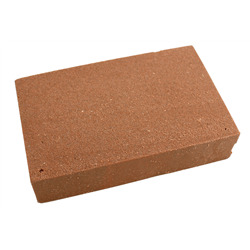Static grass puffer bottles work by manually charging model grass fibres with static electricity. When the charged...
No products
Product successfully added to your shopping cart
There are 0 items in your cart. There is 1 item in your cart.
Search Tips
What is live steam?
Live steam refers to miniature, working models of steam-powered vehicles, such as locomotives, boats, and stationary engines, operated by hobbyists. These models are functional replicas of full-sized steam engines and run on real steam power generated by heating water with fuels like coal, propane, or alcohol. The term "live steam" distinguishes these active models from static displays or toys that do not operate with steam.
Key Components of Live Steam Models
Boiler: The boiler is the core of a live steam engine, where water is heated to produce steam. This steam powers the engine, often using pistons or turbines to create mechanical motion. Boilers can be made from materials like copper or steel to withstand high pressure.
Steam Engine: The engine converts steam pressure into movement, commonly through pistons and cylinders. These components mimic the mechanisms found in full-sized steam locomotives.
Fuel Source: Live steam models use various fuels, including coal, butane, or alcohol. Coal is typically used for larger models due to its traditional appeal, while butane or alcohol is more convenient for smaller models.
Track or Waterway: For locomotives, tracks are essential, often laid out in gardens or parks. For steam boats, ponds or specially constructed waterways allow these vessels to navigate.
Applications of Live Steam
Model Railways: Live steam railways are popular, with enthusiasts building elaborate layouts complete with stations and landscapes. Scales like 1:8 or 1:12 are common, with track gauges ranging from 1.5 inches to 7.5 inches.
Steam Boats: Enthusiasts also enjoy building and operating steam-powered model boats. These can be replicas of historical vessels like paddle steamers or tugboats.
Stationary Engines: Many hobbyists build stationary engines that replicate machinery used in mills or factories. These models are often displayed at exhibitions or fairs.
Building and Operating Live Steam Models
Building: Constructing a live steam model requires mechanical skill and attention to detail. Builders must choose a prototype, decide on scale, acquire materials like metal and wood, and use tools such as lathes and welding equipment. The boiler is the most critical component, often requiring testing and certification for safety.
Operating: Running a live steam model involves preparing the boiler, lighting the fuel, and carefully monitoring steam pressure. Operators need to maintain the correct pressure for smooth operation, adjust the engine as needed, and perform regular maintenance.
Safety Considerations
Safety is paramount when working with live steam due to the high pressures involved. Boilers should be certified according to local regulations, and operators must use protective equipment such as gloves and goggles. Proper training and understanding of steam mechanics are essential to prevent accidents and ensure safe operation.
Types of Live Steam Models
Locomotives: These are detailed replicas of steam trains, often built to specific scales and used in garden railways or club tracks.
Steam Boats: Models range from classic paddle steamers to miniature tugboats and cargo ships.
Stationary Engines: These engines demonstrate steam power in action, operating pumps or other machinery at events.
Steam Cars and Trucks: Enthusiasts also build steam-powered cars and lorries, showcasing the technology of early automotive engineering.
Conclusion
Live steam is a captivating hobby that combines engineering, craftsmanship, and a love for steam technology. It offers enthusiasts the opportunity to build, operate, and enjoy working models that preserve the legacy of steam power. With a strong community and a rich history, live steam continues to engage and inspire hobbyists across the UK, keeping the art and science of steam engineering alive for future generations.
Click here to receive the tips weekly in your mailbox. You can unsubscribe at any time.








